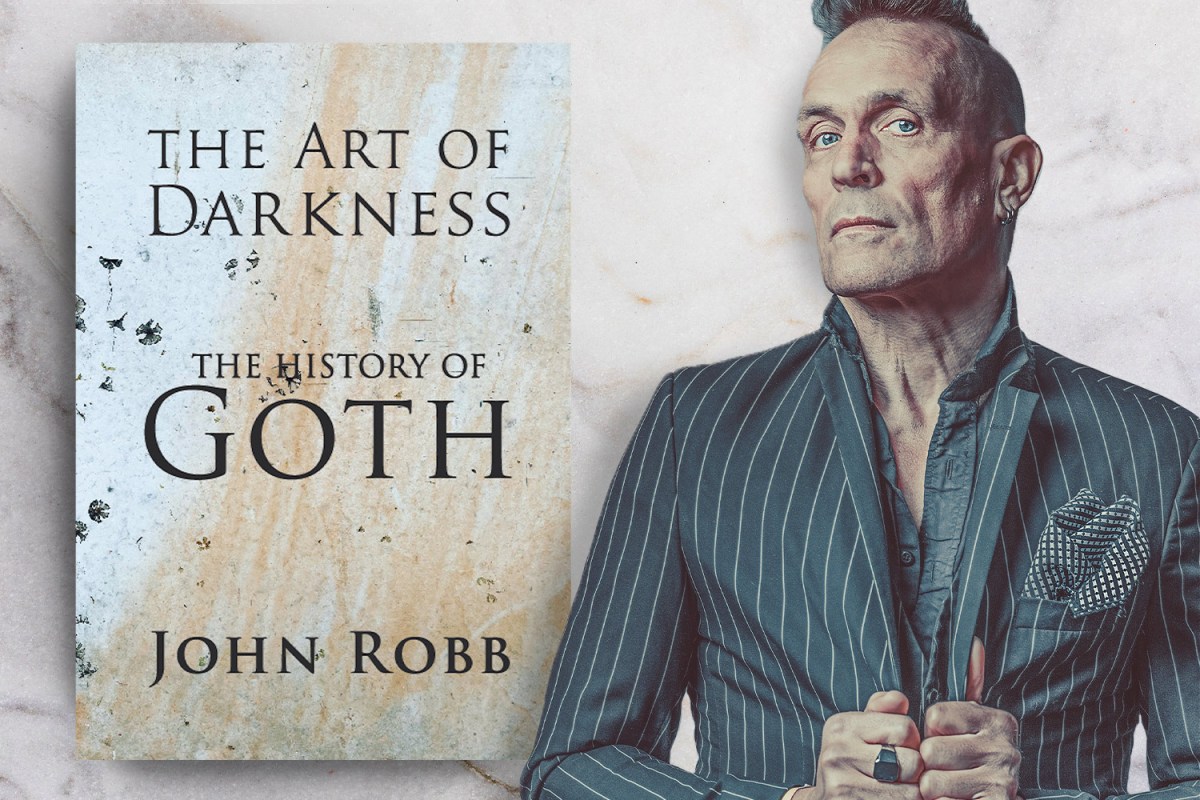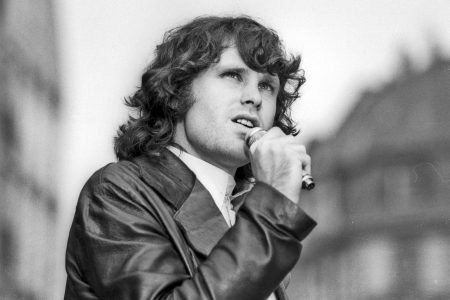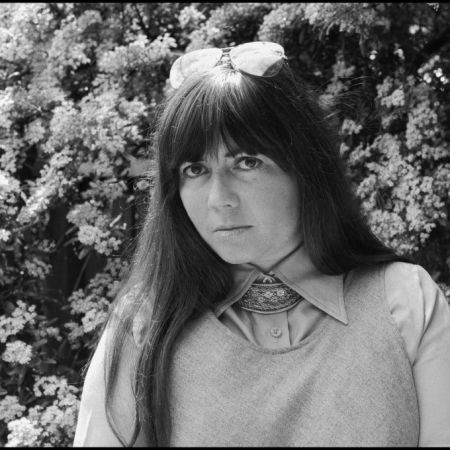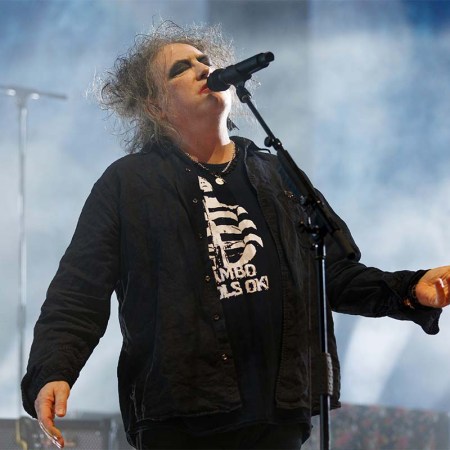If you like your music with a bit of brooding and a lot of atmosphere, you may have noticed an abundance of storied artists making their way back to the spotlight. The Cure’s recent return to touring is the highest-profile example of this, but it’s far from the only one. Later this month, Siouxsie Sioux will perform at the Latitude Festival, as part of a recent return to live performances.
There are other high-profile artists making the case for all things goth, too. As author John Robb explains in his new book The Art of Darkness: The History of Goth, goth aesthetics can be seen everywhere from menswear to the television show Wednesday. Robb is himself a musician, one who’s played in cult bands like The Membranes and Goldblade, and he brings plenty of lived experience — and interviews with plenty of iconic musicians and artists — to the table.
InsideHook spoke with Robb about the genesis of his book, the importance of The Doors to the emergence of Goth, and where exactly the line between goth and Gothic can be found.
*This interview has been edited for context.
InsideHook: As a writer with a long musical history yourself, was it challenging to write about artists you may have come into contact with in the context of your bands playing together? Or did that make it easier for you to reach out to some of the book’s interview subjects?
John Robb: In many ways I found it easier. I think playing music and writing about music places you in a unique position that can play in your favor. It gives you a genuine understanding of how music works and also an understanding that musicians often think very differently than is often perceived. Also, you have shared bills, festivals and stages with many of the bands and have a genuine feel for what the music scene is like from the inside out! You can color in much of the culture on and off the stage and also take the bigger cultural and historical viewpoint. In many ways it’s like different facets of the same diamond.
How much time did you spend working on this book, from the genesis of the project to its publication?
It took 10 years on and off. Initially, as I was writing it, no publisher was interested in a book about goth, but after I found a publisher and the story got out I was writing a book it seems to have become a mini craze to write history of goth books!
Throughout The Art of Darkness, you look at goth as an ethos more than a style — and one that can also be applied to everything from style to movies and television shows. When did you first realize that this was the best way to think of it?
From the outset. All music cultures are an ethos. In the terms of goth, every generation has to deal with its blues with whatever technology is at hand. Whether that was 19th-century poets or authors writing books or painters creating masterpieces, or in the late ’70s/early ’80s my generation dealing with their blues with guitar music because it was the predominant creative force of the time — they are all vehicles for dealing with feelings and ideas and all perfect avatars for the dark energy.
You make the argument in your book that The Doors were “the true progenitors of goth rock.” Are there any unexpected ways where you see their influence on the style, even today?
The Doors were the first band to be described as Gothic in a live review in 1967. It makes complete sense really. Jim Morrison dressed in black and was captivated by the romantic poets and sang in a baritone over funereal dark music — the unexpected twist was the film Apocalypse Now using The Doors in its soundtrack springboarding the band into the heart of post-punk 10 years later and helping to spark something. Of course there were many other influences and factors that fed into Goth, but arguably The Doors were the first to take rock into new darker and more poetic places.
At one point in your book, you write about jewelers refusing to pierce men’s ears decades ago. Was there a point where you first noticed that there had been enough of a cultural shift to make goth style much less risqué or transgressive?
In some ways time healed the wounds (in ears and in perceptions!) and the suspicions, but in other places it has remained. In some ways, the goth style like punk became a part of the fabric, but in other ways and other places it still cast people as the outsiders to be feared. There has been a general shift away from the conservatism of the late ’70s and much of that was propelled by the pioneers in my book and that’s a good thing — and yet the world seems to go forwards and backwards at the same time.
A lot of the artists you cover in The Art of Darkness have had especially long and impressive careers. Do you think there’s something inherent to goth that has to do with musical longevity?
I think classic innovative music makers always have longevity. They are game changers who paint the world in different colors and people have a strong affection for them. They not only make great music but change lives and have a profound effect on people’s perceptions. For these creators, longevity is a deserved epitaph.
“Clothes, as ever in the UK, were hugely influential” you write at one point. Are there specific styles or types of menswear that are interconnected with goth for you?
There is a whole heap of styles that accelerated out of punk from the more exaggerated hair styles moving away from the short and spiky to the towering follicle edifices and shaved sides to the predominance of black clothes, there was the mix and match of second-hand clothes and incoming black styles which have become defining as they got refined over the years, and there was more jewelry and better belts and more make up and bigger boots! It was a wonderful sartorial arms race driven by iconic bands and also the culture in the many clubs that sprang up around the scene.
New Collection of Jim Morrison Writings to Be Released This Summer
The book will be the most comprehensive collection of the Doors frontman’s written work to dateHow have your own observations of goth — both as a musician and as a writer — changed over the years?
I think its resilience has been surprising and also its timelessness. The styles are easier to buy now, but the music fluctuates and keeps on embracing technology.
You write that “Siouxsie and the Banshees were not so much goth as Gothic.” Where do you see the dividing line between the two?
For many of the bands “goth” was a sarcastic term applied to scenes that they were not necessarily part of in their minds. The term felt cheap and temporary and a sneer — the term “Gothic” hints at a longer lineage back to Edgar Allen Poe or Gothic architecture. It implies a permanence that “goth” in many ways didn’t at the time.
How important to goth, would you say, are the visionary or ecstatic elements of the style?
Intrinsic. The music and the clothes always have to match and I like the idea of people being a walking work of art. The style is soundtracked by the music and the two are perfectly entwined into the forever.
Were there any aspects of goth that writing this book prompted you to rethink?
I wanted people to realize that some of the greatest art rock that has ever existed was created by many of these bands and I wanted to underline that influence deep into the culture. It made me realize just how much great music had been created in the genre and how important it was in the post-punk period and how it changed the world by pushing the style and music envelope.
This article appeared in an InsideHook newsletter. Sign up for free to get more on travel, wellness, style, drinking, and culture.
























